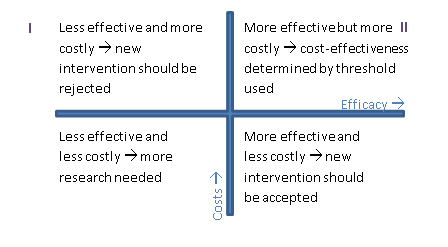The DALY
What is a DALY?
A DALY (Disability-Adjusted Life Year) is a measure of health burden, including both reduction in life expectancy and diminished quality of life. More specifically, the DALY burden for a particular condition is the sum of YLL (years of life lost due to premature mortality) and YLD (years lost to disability). Health interventions seek to avert DALYs, and in doing so, to increase the number of years that a person lives in good health.
Mathematically, a DALY is represented by the equation DALY = YLL + YLD.
- YLL is calculated as the number of deaths (n) x the standard life expectancy at age of death (L1). This measures the reduction in life expectancy.
- YLD is the number of new cases of a disease (I) x a disability weight (DW) x the average time a person lives with the disease before remission or death (L2). This measure represents the diminished quality of life experienced for an individual with injury or illness.
Looking at the distribution of DALYs across a population provides us with the Burden of Disease. This burden represents the gap between an “ideal” health situation for a population and the population’s current health status. The Burden of Disease is commonly used in global health prioritization. By summing the DALYs in a population, we can discover which populations are living with the greatest health burden, and prioritize those areas for future health interventions.
Video credit: Kahn JG. "The DALY Show". Philip R. Lee Institute for Health Policy Studies. Healthpolicy.ucsf.edu
Incremental Cost Effectiveness Ratios
Cost-effectiveness Ratios use monetary value to compare a new intervention to a known comparator (such as an older intervention or no intervention at all). In this registry, we compare new interventions to their comparators by measuring the cost of each intervention as related to the number of DALYs averted. The following formula is used to measure the cost per DALY averted:
Cost Effectiveness Ratios can be understood best as falling into one of four quadrants:

How are Incremental Cost Effectiveness Ratios (ICER’s) used?
- To understand the landscape of cost-effectiveness research in a country by disease or intervention
- To understand which interventions could have the most widespread impact on health outcomes
- To make allocate investments across interventions
- To gather information on health gains from interventions
- To benchmark intervention value
DALY vs. QALY
The Disability-Adjusted Life Year (DALY) and the Quality Adjusted Life Year (QALY) are two popular health status indices, used to measure health outcomes based on the duration and quality of life for an individual. The QALY was the first developed health status index, and is mostly used in developed countries. A QALY is defined as a year lived in perfect health.
Both metrics use a scale of 0-1 to represent the quality of life:
- QALY: “0” is equivalent to death; “1” represents perfect health.
- DALY, “0” represents perfect health; “1” equates to death.
Thus, a QALY measures the number of healthy years gained, while a DALY measures the number of healthy years lost. For this reason, health interventions seek to increase QALYs, while seeking to avert DALYs (Fox-Rushby & Hanson, 2001).
One final distinction is that the formula for the QALY typically uses preference-based weights, while the DALY typically utilizes a set of standardized disability weights. This key distinction makes the DALY a useful measure in comparing disease burdens between countries, particularly in developing countries.
References:
Fox-Rushby, J. A., & Hanson, K. (2001). Calculating and presenting disability adjusted life years (DALYs) in cost-effectiveness analysis. Health Policy and Planning, 16(3), 326-331.
Sassi, F. (2006). Calculating QALYs, comparing QALY and DALY calculations. Health Policy and Planning, 21(5), 402-408.
World Health Organization (WHO). (2015). Metrics: Disability-adjusted life year (DALY). Retrieved from http://www.who.int/healthinfo/global_burden_disease/metrics_daly/en/

